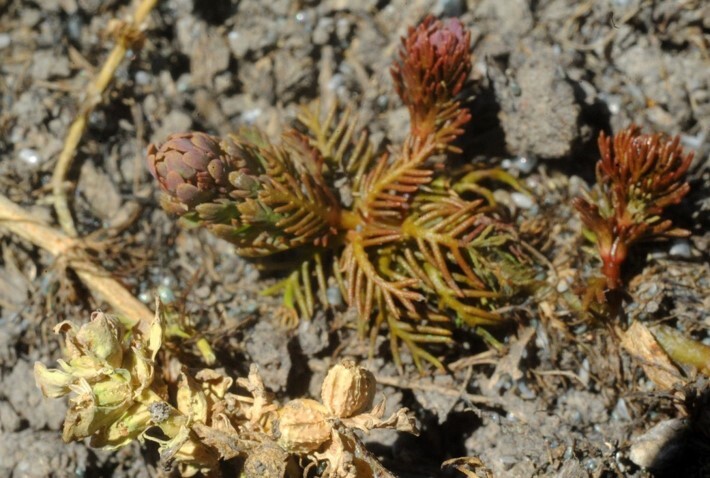Myriophyllum
Annual or perennial aquatic, semi-aquatic or littoral herbs, monoecious (in Victoria unless noted otherwise) or dioecious, usually glabrous; roots fibrous, often adventitious from nodes; stems weak, often floating. Leaves whorled, alternate or opposite, usually dimorphic; submerged leaves pectinate; emergent leaves entire or toothed. Inflorescences spike-like, usually consisting of solitary flowers or rarely 2–3-flowered dichasia. Flowers unisexual or bisexual, sessile or shortly pedicellate, usually subtended by a pair of bracteoles. Male flowers at top of spike; sepals usually 4, often triangular; petals usually 4, hooded; stamens usually 2, 4 or 8; ovary and styles vestigial or absent. Female flowers below males on monoecious plants; sepals 4 and triangular, or absent; petals 4 and vestigial, or absent; stamens absent; carpels usually 4; style sessile or clavate, rarely subulate; stigma usually fimbriate. Fruit dry, variously ornamented, splitting into 1-seeded mericarps.
About 60 species, virtually cosmopolitan, 40 species in Australia (1 introduced).
Jeanes, J.A. (1996). Haloragaceae. In: Walsh, N.G.; Entwisle, T.J., Flora of Victoria Vol. 3, Dicotyledons Winteraceae to Myrtaceae, pp. 887–908. Inkata Press, Melbourne.
 Spinning
SpinningOrchard, A.E. (1985). Myriophyllum (Haloragaceae) in Australasia. II. The Australian Species. Brunonia 8: 173–291.




